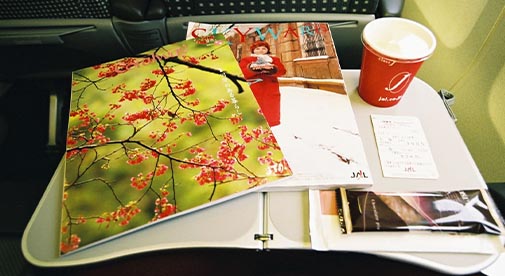As more and more traditionally print publications move to an online-only model, airline magazines don’t seem to be going anywhere anytime soon.
In fact, with a bevy of new budget carriers opening new routes around the world, now is a great time to try breaking into the world of writing for in-flight magazines.
Here are a few tips to help you get started.
1. Broaden your horizons
Your first step is to seek out potential outlets. While the in-flight magazines associated with national carriers are an obvious bet, note that there are plenty of publications that may be off your radar.
Don’t forget budget carriers; although such airlines may not offer much in terms of free amenities, they do generally have their own magazines (after all, in-flight magazine ad space is worth a fortune).
Also consider international airways that operate outside of your region; many of these publications offer bilingual content, oftentimes published in English and then translated into their local language.
Finally, note some airlines have specific, luxury-focused magazines for business and/or first-class cabins, meaning on any given flight, there may be two different publications aimed at different categories of passenger.
2. Read as much as you can
No matter what outlet you’re attempting to pitch, it’s important to get a good feel for what kind of content they publish before you even start to generate ideas. While gaining access to many other publications can be as easy as opening your phone, getting your hands on airline magazines can be a bit trickier.
While some are strictly print, with a distribution channel limited to airplane seat pockets, a fair few do publish back issues online. Always grab issues from your flights and remember to ask any of your friends who might be traveling to snag you copies (in-flight magazines are generally free to take home, and airlines stock plenty of extras).
Most airline lounges also keep a hefty supply of their respective in-flight magazines on hand. If you happen to be at an airport, you can usually walk in and grab one right from the front desk without actually having to pay for the privilege of using the lounge.
If you have multiple issues or online access, try to read the most recent issues first to see what sort of pieces have been published in the past few months, and which destinations seem to have received the most coverage.
You’ll soon see that although most offer a fair bit of travel coverage, some have a larger focus on human interest or business-related stories or even celebrity profiles.
3. Pitch strategically
Now that you have a good idea of who to write for and what kind of stories they tend to run, it’s time to start pitching, but you’ll want to be strategic.
While you may have a great cover story idea that would be perfect for a given magazine, it’s best to start small, with a front-of-the-book (FOB) piece when you first start, as many features are written in house and most editors prefer to get a feel of what it’s like to work with a writer before doling out larger assignments.
Also, make sure to pitch stories related to destinations the airline actual flies to (or within close driving distance). Finally, make sure your stories are timely: if an airline happens to be launching a new route or if there’s an event coming up in a few months in one of their key destinations, pitch it!

